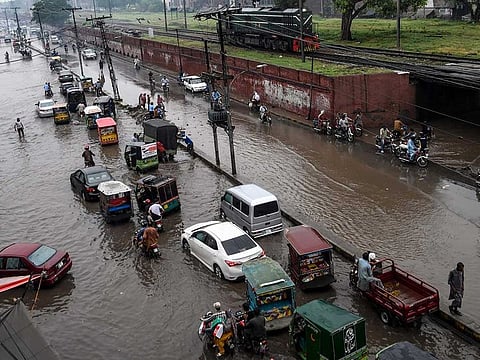Lahore sets up first underground rainwater storage system
Reservoir system will store 1.4 million gallons of water

Islamabad: When heavy rain comes pouring down, Pakistan’s urban areas are flooded with water, yet the country is facing a serious water crisis — mainly due to poor management rather than scarcity. To address the issue, the Lahore city management is all set to launch its first underground water storage system to collect rainwater for reuse and reduce flooding in the city of over 11 million.
The Lahore Development Authority (LDA), in collaboration with its subsidiary Water and Sanitation Agency (WASA), has developed the first rainwater storage in the city to recharge the depleting groundwater resources. The project “Monsoon Underground Water Reservoir” that started in May and will be operational this month will help store 1.4 million gallons of water (100mm of rainwater). Built at a cost of about Rs150 million, the storage system is located near Lahore’s Lawrence Road — one of the areas flooded during heavy rain. The city receives an average annual downpour of 628-670mm.
Syed Zahid Aziz, managing director of WASA, said that in the first phase, “a 600-feet drain has been laid down connecting Lawrence Garden to the underground water reservoir. But if the tank overflows in case it rains the whole day, there is a second outer surface reservoir to contain over 0.2 million gallons of water” and even if the second reservoir fills up, there is another system to channel the water. The agency is keen to replicate the system throughout the city if the government approves funding.
Most of the collected water will be used to irrigate the Lahore city’s gardens and parks. The project will also help recharge the irreplaceable groundwater, which is exhausting at a faster rate due to excessive pumping and massive urbanisation in Pakistan.
Key features of the Lahore storage system
Project cost: Rs150 million Catchment area: 30 acres approx. Ponding area: 3 acres Storage capacity: 1.4 million gallons Completion time: 3 months (May – July 2020) Reuse of rainwater: horticulture
Pakistan’s first urban rainwater harvesting system was installed in the capital city of Islamabad in 2010 at the iconic Faisal Mosque to conserve 3 million litres of water.
Rainwater harvesting is simple and cost-effective solution to help improve the groundwater reservoir, help irrigate land and provide drinking water to meet the increasing demand of the rising population. Rainwater collection, normally rooftop catchment, for home gardening is popular in developing countries.
How will it work?
- Collection of stormwater through pipe drain (gully gratings). - Collection of silt in the silt collector. - Screening of water to remove floating material. - Storage of rainwater. - Use of rainwater for horticulture - Pumping of excess stormwater into a nearby drain
With the new and effective rain harvesting systems, Pakistan is integrating modern technology with ancient techniques as the 5,000-year-old Indus Valley civilisation in modern-day Pakistan that flourished along the banks of the River Indus had one of the most well developed urban water supply and sewage systems in the world.
Sign up for the Daily Briefing
Get the latest news and updates straight to your inbox



